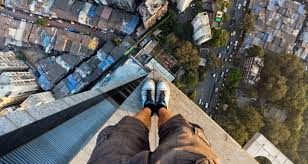I had this lovely opportunity to visit Ostia Antica at Rome. I must say finally, because it is not far from the Fiumicino airport and I have seen plenty of advertisement about it. But I never seem to get anyone interesting enough to come with me.
This time I was lucky because a friend of mine wanted to join me.
Rome was not only the city of Rome, but it was most of Europe, part of Asia and northern Africa too. One and only person ruled over it all. With the help of senator's This very same political model is still in many countries.
 |
| Photo by Huffington Post |
So what romans did was to bring water, build roads and have fine food. Pretty much what we do. They also collected taxes and had an efficient military system and used slaves. Pretty much what we do today. Next to it, they exterminate several other populations they thought was menaces to them. Pretty much what we do once we get in war with other nations.
They also took care of their body and had fun. Pretty much what we do today.
So to understand Rome, that is huge and absolutely not possible to imagine, a visit to Ostia Antica clears all thoughts. This should be a stop to each school trip visiting Rome. It is worth more than several history books.
At the entrance we found this map and a spot where to listen the first explanation.
The whole area covers 15.000 km2
It was all created by the Empire Claudio out of a need of a harbour town, 42 aD that serves Rome. After several other improvements by Traiano and Caesarian, it has the peak of inhabitants near 75.000. Only a handful of what Rome had.
Following the tour we saw the necropolis that stands for Roman age cemetery.
In our culture we use to bury death bodies, or cremate them, that might come from Etruscan and Roman period.
The statue of Minerva, or Menvra as Etruscan used to say waited for us.
Minevra stands for Greek Pallas Athene, and it was the goddess of earth and wine.
Roman empire was full of marble statues and there is more to be seen in the whole area.
Romans loved bathing and instead of having simple blue tiles in the pool area, they had beautifully decorated mosaic. If you still haven't got a chance to visit Terme di Caracalla, this can be less emotional experience. I had chicken skin just at admiring all that art work done nearly 2000 years ago.
As I said, Romans loved drama, and that was made by actors or by circus, with animals overseas. Nowadays it is a bit outdated to go and see a tiger jumping in a circus, and it is preferable to watch human acrobats instead. But it certainly started from Rome that we want to have some adrenaline watching exotic animals making tricks.
I thought that I should shoot my self in different angles as a proof that I really was here.
Romans actually had a mall in the area of the theatre. Apparently Romans figured out that between one play and an other one people might get bored and giving them the opportunity to explore what was new and from where it could be good for the business.
Shops with signs to explain what they sold. A little bit like in our modern days.
The sign is on the top of a shop or in the window. Romans decorated the area in the floor near the entrance.
This marble table belongs to the fish shop near by the harbour. That area is actually the market place of the city.
Some where between the market place ant the theatre I was indicate to have a closer look to this Roman period bakery
It was to my total surprise to found a real restaurant. It actually had a place for fire place, a desc or an accounter and some kind of a jar where they kept either food or beverage.
Right... give me a cup of wine
It was not only Romans that could build houses in several floors; If you have red my visit to Sardinia, you might have red about Nuraghi too. Sardinians used to build houses in several floors, but they didn't have the technique to build stairs indoor.
The River Tiber was truly important to Ostia Antica. It was like an entrance to the Rome. Any merchandise passed throughout Ostia Antica before it reached the Senate and the Empire.
Rome was, as I see with my foreign eyes that come from a culture that has written history not older than 250 years, the United States or China of that time being. As a matter of fact, Wikipedia says about Rome this: "'The City of Rome was the largest city in the world c. 100 BC – c. 400 AD, with Constantinople (New Rome) becoming the largest around 500 AD,and the Empire's populace grew to an estimated 50 to 90 million inhabitants (roughly 20% of the world's population at the time).
To understand Rome, and to understand our culture, I had to visit Ostia Antica.
Every singe visitor of Rome, should pay one day of her or his time and visit Ostia Antica.
It is easy to get to Ostia Antica from Rome. I just took a tube from the station Pyramide and with the price of the same ticket as in downtown Rome, without getting out of the tube station I took an other train.
There are two routes to follow. One that takes 4 hours and an other one of 7 hours.
The entrance fee was €5 and audioguide €5
But I would have preferred to have a guide.
There is only one restaurant and one restroom area.
As a guide, I do not approve paying for a "machine", if I can relate with a real person instead.












































